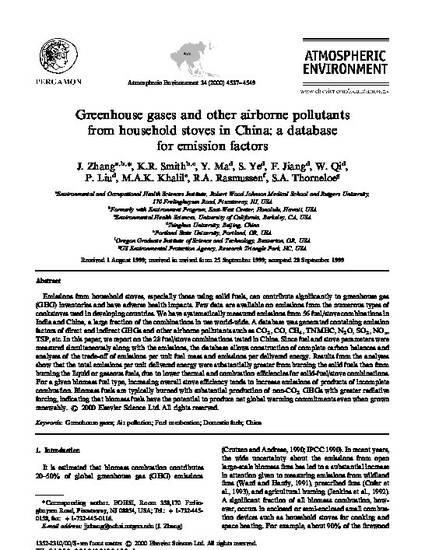
- Ozone layer--Research,
- Greenhouse gases -- Research
Emissions from household stoves, especially those using solid fuels, can contribute significantly to greenhouse gas (GHG) inventories and have adverse health impacts. Few data are available on emissions from the numerous types of cookstoves used in developing countries. We have systematically measured emissions from 56 fuel/stove combinations in India and China, a large fraction of the combinations in use world-wide. A database was generated containing emission factors of direct and indirect GHGs and other airborne pollutants such as CO2, CO, CH4, TNMHC, N2O, SO2, NOx, TSP, etc. In this paper, we report on the 28 fuel/stove combinations tested in China. Since fuel and stove parameters were measured simultaneously along with the emissions, the database allows construction of complete carbon balances and analyses of the trade-off of emissions per unit fuel mass and emissions per delivered energy. Results from the analyses show that the total emissions per unit delivered energy were substantially greater from burning the solid fuels than from burning the liquid or gaseous fuels, due to lower thermal and combustion efficiencies for solid-fuel/stove combinations. For a given biomass fuel type, increasing overall stove efficiency tends to increase emissions of products of incomplete combustion. Biomass fuels are typically burned with substantial production of non-CO2 GHGs with greater radiative forcing, indicating that biomass fuels have the potential to produce net global warming commitments even when grown renewably.

This work was authored as part of the Contributor's official duties as an Employee of the United States Government and is therefore a work of the United States Government. In accordance with 17 U.S.C. 105, no copyright protection is available for such works under U.S. Law.